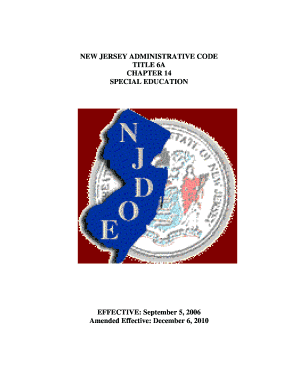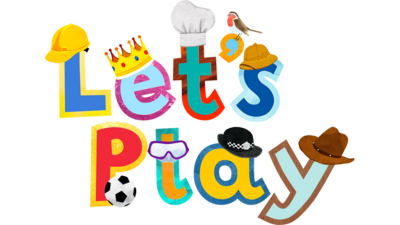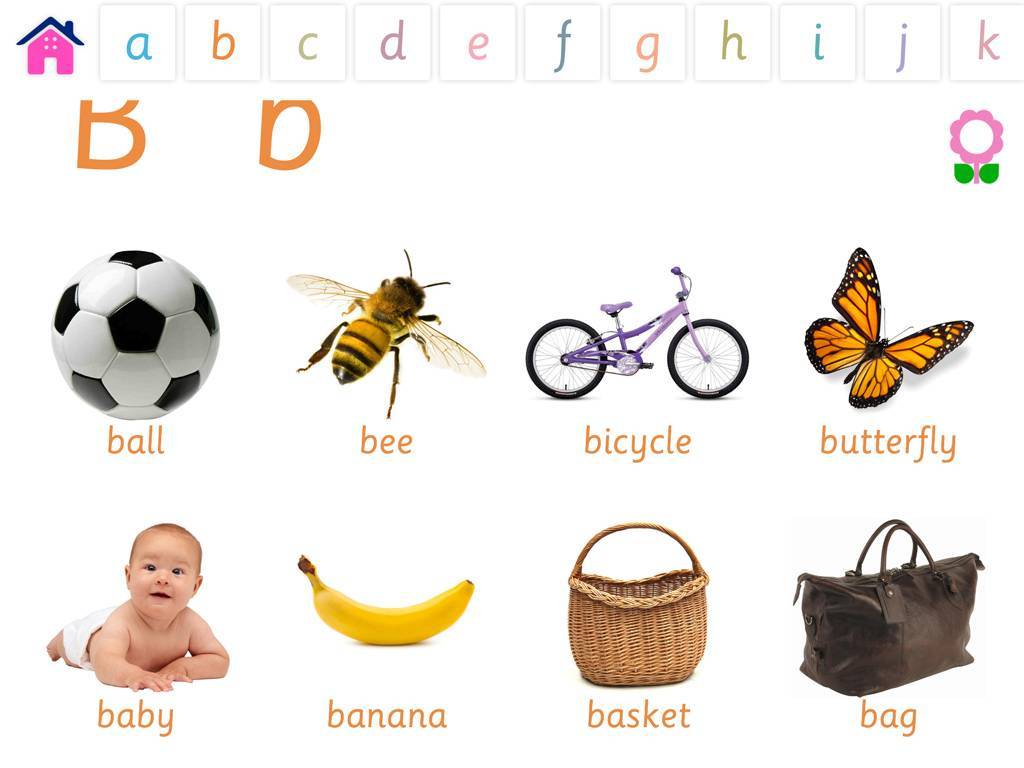 “Well, the school did their evaluations and he doesn’t qualify for services” tells me a parent of a 3.5 year old, newly admitted private practice client. “I just don’t get it” she says bemusedly, “It is so obvious to anyone who spends even 10 minutes with him that his language is nowhere near other kids his age!” “How can this happen?” she asks frustratedly?
“Well, the school did their evaluations and he doesn’t qualify for services” tells me a parent of a 3.5 year old, newly admitted private practice client. “I just don’t get it” she says bemusedly, “It is so obvious to anyone who spends even 10 minutes with him that his language is nowhere near other kids his age!” “How can this happen?” she asks frustratedly?
This parent is not alone in her sentiment. In my private practice I frequently see preschool children with speech language impairments who for all intents and purposes should have qualified for preschool- based speech language services but do not due to questionable testing practices.
To illustrate, several years ago in my private practice, I started seeing a young preschool girl, 3.2 years of age. Just prior to turning 3, she underwent a collaborative school-based social, psychological, educational, and speech language evaluation. The 4 combined evaluators from each field only used one standardized assessment instrument “The Battelle Developmental Inventory – Second Edition (BDI-2)” along with a limited ‘structured observation’, without performing any functional or dynamic assessments and found the child to be ineligible for services on account of a low average total score on the BDI-2.
However, during the first session working 1:1 with this client at the age of 3.2 a number of things became very apparent. The child had very limited highly echolalic verbal output primarily composed of one-word utterances and select two-word phrases. She had highly limited receptive vocabulary and could not consistently point to basic pictures denoting common household objects and items (e.g., chair, socks, clock, sun, etc.) Similarly, expressively she exhibited a number of inconsistencies when labeling simple nouns (e.g., called tree a flower, monkey a dog, and sofa a chair, etc.) Clearly this child’s abilities were nowhere near age level, so how could she possibly not qualify for preschool based services?
Further work with the child over the next several years yielded slow, labored, and inconsistent gains in the areas of listening, speaking, and social communication. I’ve also had a number of concerns regarding her intellectual abilities that I had shared with the parents. Finally, two years after preschool eligibility services were denied to this child, she underwent a second round of re-evaluations with the school district at the age of 5.2.
This time around she qualified with bells on! The same speech language pathologist and psychologist who assessed her first time around two years ago, now readily documented significant communication (Preschool Language Scale-5-PLS-5 scores in the 1st % of functioning) and cognitive deficits (Full Scale Intelligence Quotient-FSIQ in low 50’s).
Here is the problem though. This is not a child who had suddenly regressed in her abilities. This is a child who actually had improved her abilities in all language domains due to private language therapy services. Her deficits very clearly existed at the time of her first school-based assessment and had continued to persist over time. For the duration of two years this child could have significantly benefited from free and appropriate education in school setting, which was denied to her due to highly limited preschool assessment practices.
Today, I am writing this post to shed light on this issue, which I’m pretty certain is not just confined to the state of New Jersey. I am writing this post not simply to complain but to inform parents and educators alike on what actually constitutes an appropriate preschool speech-language assessment.
 As per NJAC 6A:14-2.5 Protection in evaluation procedures (pgs. 29-30)
As per NJAC 6A:14-2.5 Protection in evaluation procedures (pgs. 29-30)
(a) In conducting an evaluation, each district board of education shall:
- Use a variety of assessment tools and strategies to gather relevant functional and developmental information, including information:
- Provided by the parent that may assist in determining whether a child is a student with a disability and in determining the content of the student’s IEP; and
- Related to enabling the student to be involved in and progress in the general education curriculum or, for preschool children with disabilities, to participate in appropriate activities;
- Not use any single procedure as the sole criterion for determining whether a student is a student with a disability or determining an appropriate educational program for the student; and
- Use technically sound instruments that may assess the relative contribution of cognitive and behavioral factors, in addition to physical or developmental factors.
Furthermore, according to the New Special Education Code: N.J.A.C. 6A:14-3.5(c)10 (please refer to your state’s eligibility criteria to find similar guidelines) the eligibility of a “preschool child with a disability” applies to any student between 3-5 years of age with an identified disabling condition adversely affecting learning/development (e.g., genetic syndrome), a 33% delay in one developmental area, or a 25% percent delay in two or more developmental areas below :
- Physical, including gross/fine motor and sensory (vision and hearing)
- Intellectual
- Communication
- Social/emotional
- Adaptive
 These delays can be receptive (listening) or expressive (speaking) and need not be based on a total test score but rather on all testing findings with a minimum of at least two assessments being performed. A determination of adverse impact in academic and non-academic areas (e.g., social functioning) needs to take place in order for special education and related services be provided. Additionally, a delay in articulation can serve as a basis for consideration of eligibility as well.
These delays can be receptive (listening) or expressive (speaking) and need not be based on a total test score but rather on all testing findings with a minimum of at least two assessments being performed. A determination of adverse impact in academic and non-academic areas (e.g., social functioning) needs to take place in order for special education and related services be provided. Additionally, a delay in articulation can serve as a basis for consideration of eligibility as well.
Moreover, according to the State Education Agencies Communication Disabilities Council (SEACDC) Consulatent for NJ – Fran Liebner, the BDI-2 is not the only test which can be used to determine eligibility, since the nature and scope of the evaluation must be determined based on parent, teacher and IEP team feedback.
In fact, New Jersey’s Special Education Code, N.J.A.C. 6A:14 prescribes no specific test in its eligibility requirements. While it is true that for NJ districts participating in Indicator 7 (Preschool Outcomes) BDI-2 is a required collection tool it does NOT preclude the team from deciding what other diagnostic tools are needed to assess all areas of suspected disability to determine eligibility.
Speech pathologists have many tests available to them when assessing young preschool children 2 to 6 years of age.
SELECT SPEECH PATHOLOGY TESTS FOR PRESCHOOL CHILDREN (2-6 years of age)
Articulation:
- Sunny Articulation Test (SAPT)** Ages: All (nonstandardized)
- Clinical Assessment of Articulation and Phonology-2 (CAAP-2) Ages: 2.6+
- Linguisystems Articulation Test (LAT) Ages: 3+
- Goldman Fristoe Test of Articulation-3 (GFTA-3) Ages: 2+
Fluency:
- Stuttering Severity Instrument -4 (SSI-4) Ages: 2+
- Test of Childhood Stuttering (TOCS) Ages 4+
 General Language:
General Language:
- Preschool Language Assessment Instrument-2 (PLAI-2) Ages: 3+
- Clinical Evaluation of Language Fundamentals -Preschool 2 (CELF-P2) Ages: 3+
- Test of Early Language Development, Third Edition (TELD-3) Ages: 2+
- Test of Auditory Comprehension of Language Third Edition (TACL-4) Ages: 3+
- Preschool Language Scale-5 (PLS-5)* (use with extreme caution) Ages: Birth-7:11
Vocabulary
- Receptive One-Word Picture Vocabulary Test-4 (ROWPVT-4) Ages 2+
- Expressive One-Word Picture Vocabulary Test-4 (EOWPVT-4) Ages 2+
- Montgomery Assessment of Vocabulary Acquisition (MAVA) 3+
- Test of Word Finding-3 (TWF-3) Ages 4.6+
Auditory Processing and Phonological Awareness
- Auditory Skills Assessment (ASA) Ages 3:6+
- Test of Auditory Processing Skills-3 (TAPS-3) Ages 4+
- Comprehensive Test of Phonological Processing-2 (CTOPP-2) Ages 4+
 Pragmatics/Social Communication
Pragmatics/Social Communication
- Language Use Inventory LUI (O’Neil, 2009) Ages 18-47 months
- Children’s Communication Checklist-2 (CCC-2) (Bishop, 2006) Ages 4+
In addition to administering standardized testing SLPs should also use play scales (e.g., Westby Play Scale, 1980) to assess the given child’s play abilities. This is especially important given that “play—both functional and symbolic has been associated with language and social communication ability.” (Toth, et al, 2006, pg. 3)
 Finally, by showing children simple wordless picture books, SLPs can also obtain of wealth of information regarding the child’s utterance length, as well as narrative abilities ( a narrative assessment can be performed on a verbal child as young as two years of age).
Finally, by showing children simple wordless picture books, SLPs can also obtain of wealth of information regarding the child’s utterance length, as well as narrative abilities ( a narrative assessment can be performed on a verbal child as young as two years of age).
Comprehensive school-based speech-language assessments should be the norm and not an exception when determining preschoolers eligibility for speech language services and special education classification.
Consequently, let us ensure that our students receive fair and adequate assessments to have access to the best classroom placements, appropriate accommodations and modifications as well as targeted and relevant therapeutic services. Anything less will lead to the denial of Free Appropriate Public Education (FAPE) to which all students are entitled to!
Helpful Smart Speech Therapy Resources Pertaining to Preschoolers:
- Pediatric History Questionnaire
- Speech Language Assessment Checklist For Preschool Children
- Language Processing Checklist for Preschool Children 3:0-5:11 Years of Age
- Social Pragmatic Deficits Checklist for Preschool Children
- Recognizing the Warning Signs of Social Emotional Difficulties in Language Impaired Toddlers and Preschoolers
- Narrative Assessment Bundle
- Behavior Management Strategies for Speech Language Pathologists
- Effective Behavior Management Techniques for Parents and Professionals
- Executive Function Impairments in At-Risk Pediatric Populations
- General Assessment and Treatment Start Up Bundle
- Comprehensive Assessment of Monolingual and Bilingual Children with Down Syndrome
- Multicultural Assessment Bundle
- Creating A Learning Rich Environment for Language Delayed Preschoolers
- Strategies of Language Facilitation with Picture Books For Parents and Professionals
- Assessment of sound and syllable imitation in Russian speaking infants and toddlers
- Russian Articulation Screener
 Today, I’d like to talk about speech and language assessments of children under three years of age. Namely, the quality of these assessments. Let me be frank, I am not happy with what I am seeing. Often times, when I receive a speech-language report on a child under three years of age, I am struck by how little functional information it contains about the child’s linguistic strengths and weaknesses. Indeed, conversations with parents often reveal that at best the examiner spent no more than half an hour or so playing with the child and performed very limited functional testing of their actual abilities. Instead, they interviewed the parent and based their report on parental feedback alone. Consequently, parents often end up with a report of very limited value, which does not contain any helpful information on how delayed is the child as compared to peers their age.
Today, I’d like to talk about speech and language assessments of children under three years of age. Namely, the quality of these assessments. Let me be frank, I am not happy with what I am seeing. Often times, when I receive a speech-language report on a child under three years of age, I am struck by how little functional information it contains about the child’s linguistic strengths and weaknesses. Indeed, conversations with parents often reveal that at best the examiner spent no more than half an hour or so playing with the child and performed very limited functional testing of their actual abilities. Instead, they interviewed the parent and based their report on parental feedback alone. Consequently, parents often end up with a report of very limited value, which does not contain any helpful information on how delayed is the child as compared to peers their age. Why 30 months, you may ask? Well, there isn’t really any hard science to it. It’s just that I noticed that a significant percentage of parents who were already worried about their children’s speech-language abilities when they were younger, begin to act upon those worries as the child is nearing 3 years of age and their abilities are not improving or are not commensurate with other peers their age.
Why 30 months, you may ask? Well, there isn’t really any hard science to it. It’s just that I noticed that a significant percentage of parents who were already worried about their children’s speech-language abilities when they were younger, begin to act upon those worries as the child is nearing 3 years of age and their abilities are not improving or are not commensurate with other peers their age. At this point, I am ready to move on to the language portion of the assessment. Here it is important to note that a number of assessments for toddlers under 3 years of age contain numerous limitations. Some such as REEL-3 or Rosetti (a criterion-referenced vs. normed-referenced instrument) are observational or limitedly interactive in nature, while others such as PLS-5, have a tendency to
At this point, I am ready to move on to the language portion of the assessment. Here it is important to note that a number of assessments for toddlers under 3 years of age contain numerous limitations. Some such as REEL-3 or Rosetti (a criterion-referenced vs. normed-referenced instrument) are observational or limitedly interactive in nature, while others such as PLS-5, have a tendency to  Now I know that many of you will tell me, that this is a ‘perfect world’ evaluation conducted by a private therapist with an unlimited amount of time on her hands. And to some extent, many of you will be right! Yes, such an evaluation was a result of more than 30 minutes spent face-to-face with the child. All in all, it took probably closer to 90 minutes of face to face time to complete it and a few hours to write. And yes, this is a luxury only a few possess and many therapists in the early intervention system lack. But in the long run, such evaluations pay dividends not only, obviously, to your clients but to SLPs who perform them. They enhance and grow your reputation as an evaluating therapist. They even make sense from a business perspective. If you are well-known and highly sought after due to your evaluating expertise, you can expect to be compensated for your time, accordingly. This means that if you decide that your time and expertise are worth private pay only (due to poor insurance reimbursement or low EI rates), you can be sure that parents will learn to appreciate your thoroughness and will choose you over other providers.
Now I know that many of you will tell me, that this is a ‘perfect world’ evaluation conducted by a private therapist with an unlimited amount of time on her hands. And to some extent, many of you will be right! Yes, such an evaluation was a result of more than 30 minutes spent face-to-face with the child. All in all, it took probably closer to 90 minutes of face to face time to complete it and a few hours to write. And yes, this is a luxury only a few possess and many therapists in the early intervention system lack. But in the long run, such evaluations pay dividends not only, obviously, to your clients but to SLPs who perform them. They enhance and grow your reputation as an evaluating therapist. They even make sense from a business perspective. If you are well-known and highly sought after due to your evaluating expertise, you can expect to be compensated for your time, accordingly. This means that if you decide that your time and expertise are worth private pay only (due to poor insurance reimbursement or low EI rates), you can be sure that parents will learn to appreciate your thoroughness and will choose you over other providers. In mid-2014, I purchased the
In mid-2014, I purchased the  Errors on this subtest can result due to pragmatic, semantic or syntactic errors. With respect to pragmatics errors can result due to illogical, nonsensical, vague or incomplete sentences as well as due to sentence formulation which does not take into account presented scenes. With respect to semantics errors can result due to missing or misused target words as well as due to vague, incorrect or misused verbiage. With respect to syntax errors can result due to use of sentence fragments, morphological misuse of target words (changing word forms) as well as syntact deviations on non-target words.
Errors on this subtest can result due to pragmatic, semantic or syntactic errors. With respect to pragmatics errors can result due to illogical, nonsensical, vague or incomplete sentences as well as due to sentence formulation which does not take into account presented scenes. With respect to semantics errors can result due to missing or misused target words as well as due to vague, incorrect or misused verbiage. With respect to syntax errors can result due to use of sentence fragments, morphological misuse of target words (changing word forms) as well as syntact deviations on non-target words. What I am concerned about:
What I am concerned about: 

 In my
In my 

 In this post, I am continuing my series of articles on speech and language assessments of children under 3 years of age. My first installment in this series offered suggestions regarding what information to include in
In this post, I am continuing my series of articles on speech and language assessments of children under 3 years of age. My first installment in this series offered suggestions regarding what information to include in  As mentioned in my previous post on
As mentioned in my previous post on  Developmental Milestones expected of a 16-18 months old toddler:
Developmental Milestones expected of a 16-18 months old toddler:  Play Skills/Routines:
Play Skills/Routines: Materials to use with the child to promote language and play:
Materials to use with the child to promote language and play:  Core vocabulary categories for listening and speaking:
Core vocabulary categories for listening and speaking: